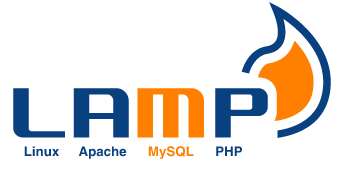LAMP on Fedora 28/27, CentOS/Red Hat (RHEL) 7.5/6.10
Table of Contents

LAMP (Linux, Apache, MariaDB/MySQL, PHP) server is very powerful server setup behind any website or web based service. This guide is collection of Fedora/CentOS/Red Hat (RHEL), Apache, MariaDB/MySQL and PHP install guides.
Today the Internet is full of instructions, which promises a LAMP server installation with a “One-Liner”, and so forth. In fact, these “One-Liner” instructions assume that, Linux is already installed and installs just AMP (Apache, MariaDB/MySQL, PHP) pakages, without any configuration. AMP programs can be installed with one command easily, of course, but the correct configuration have to be done anyway, especially if the environment is going to production use.
This guide (more specifically this guide parts) try to explain in more detail LAMP (Linux, Apache, MariaDB/MySQL, PHP) server environment installation. This howto can be used to pre-installed Linux, and instructions can be used for various Fedora and Red Hat based Linux distros with YUM. This guide is also usable with setup where MariaDB/MySQL databases and Apache Web servers are on different server machines.
This guide includes three separated steps/guides⌗
Note: Any step can be omitted if something does not want to install.
1. Install Linux (Fedora 28/27/26, CentOS 7.5/6.10, Red Hat 7.5/6.10)⌗
Currently there are four different instructions for installing Linux (Fedora 28/27/26, CentOS 7.5/6.10 and Red Hat 6.10).
Install Fedora 28 Linux >>⌗
Install Fedora 27 Linux >>⌗
Install Fedora 26 Server Linux >>⌗
Install CentOS 7.5 Linux >>⌗
Install CentOS 6.10 Linux >>⌗
Install Red Hat (RHEL) 6 Linux >>⌗
2. Install MariaDB 10.3/10.2 or MySQL 8.0/5.7⌗
Install MariaDB 10.3/10.2 database server >>⌗
— OR —
Install MySQL 8.0/5.7 database server >>⌗
Note: Open MySQL port only when it’s really needed and otherwise use it only locally (localhost)
3. Install Apache (httpd) 2.4 with PHP 7.2⌗
Install latest PHP 7.2 (currently 7.2.9) version.
Install Apache (httpd) web server with PHP support >>⌗
PHP: APC Configuration and Usage Tips and Tricks >>⌗
Enable Apache Userdir with SELinux on Fedora 28/27/26, CentOS 7.5/6.10, Red Hat (RHEL) 7.5/6.10 >>⌗
Finally you are done. Not very hard, but at least the most important configurations and checks have been already completed.